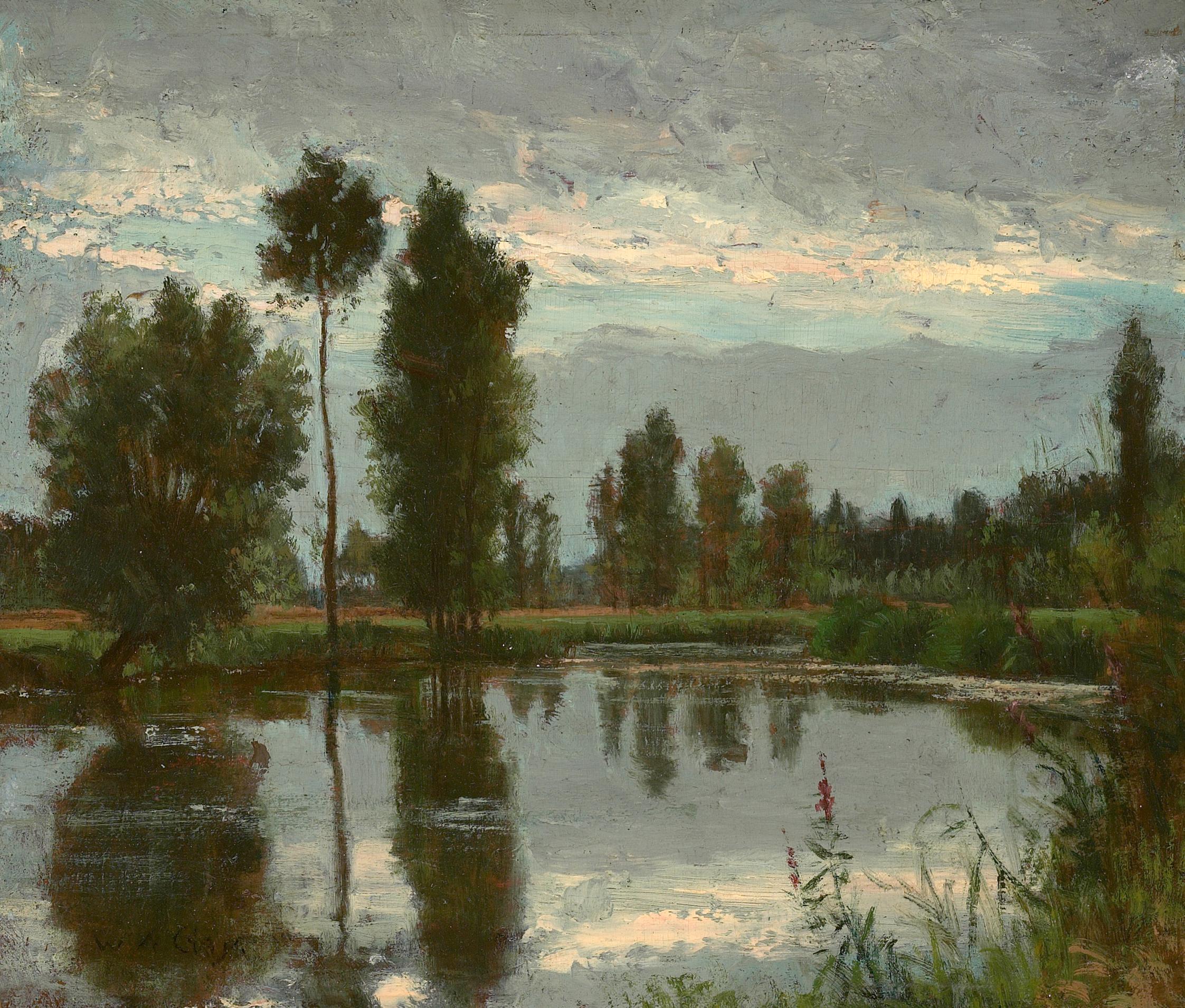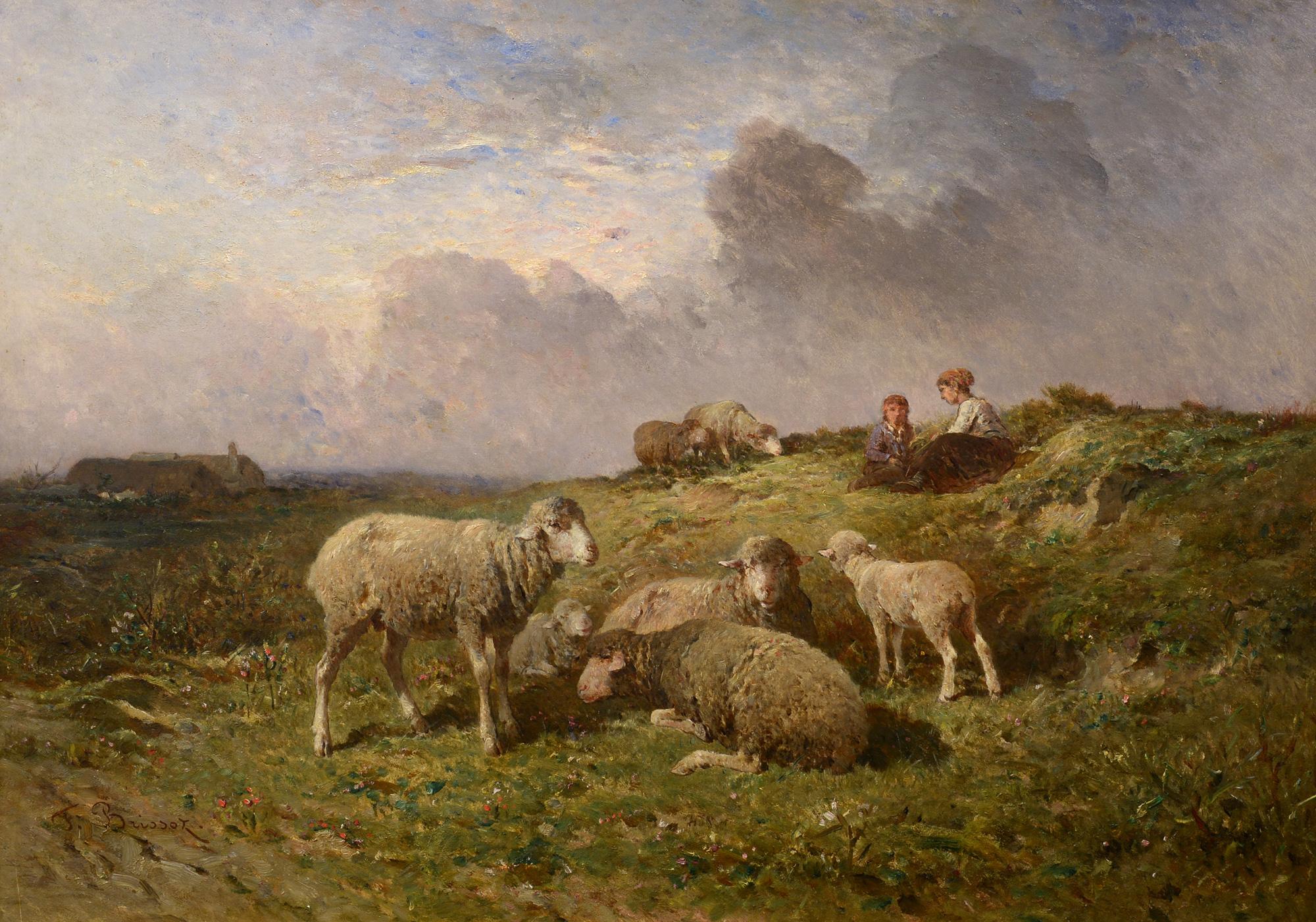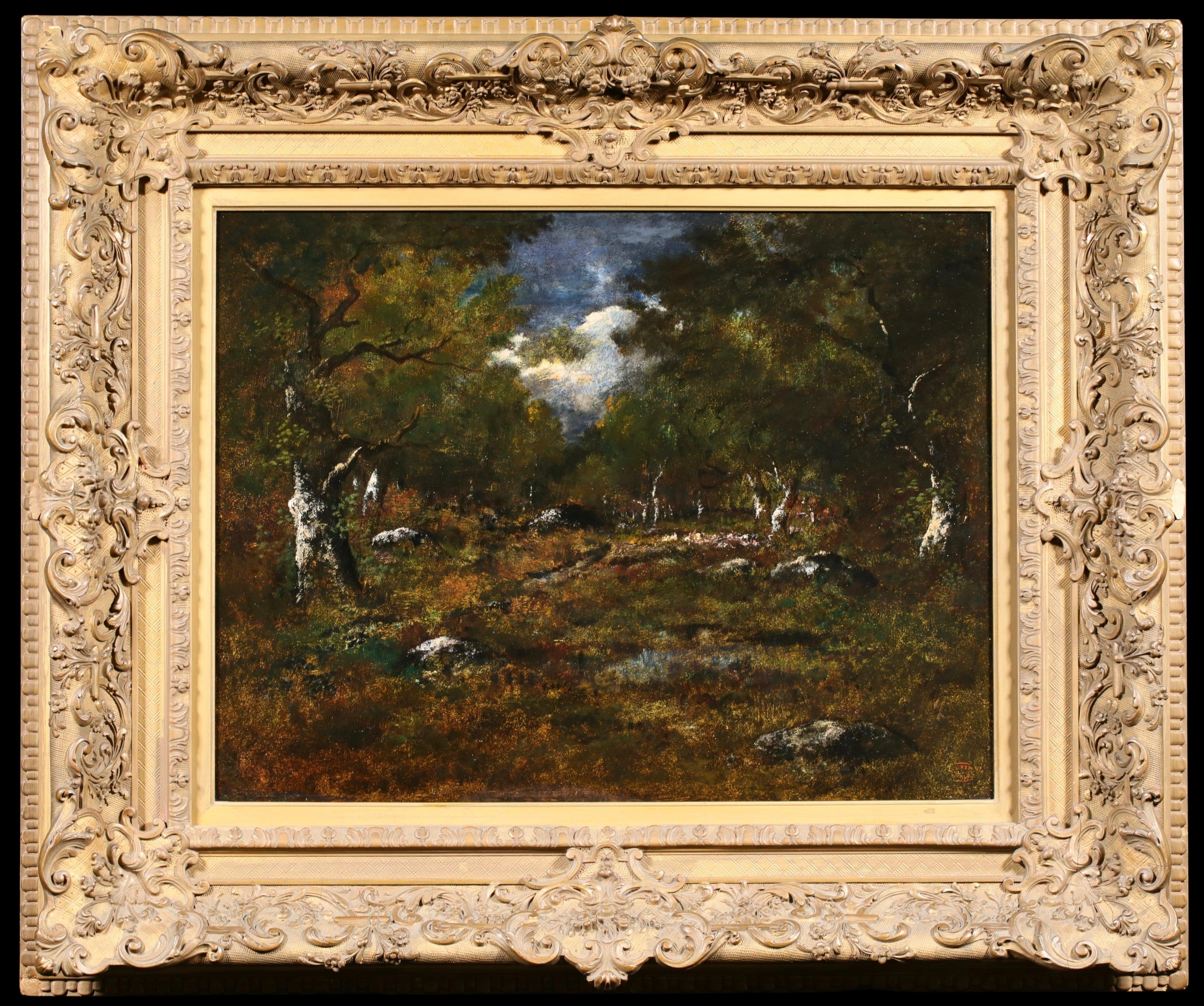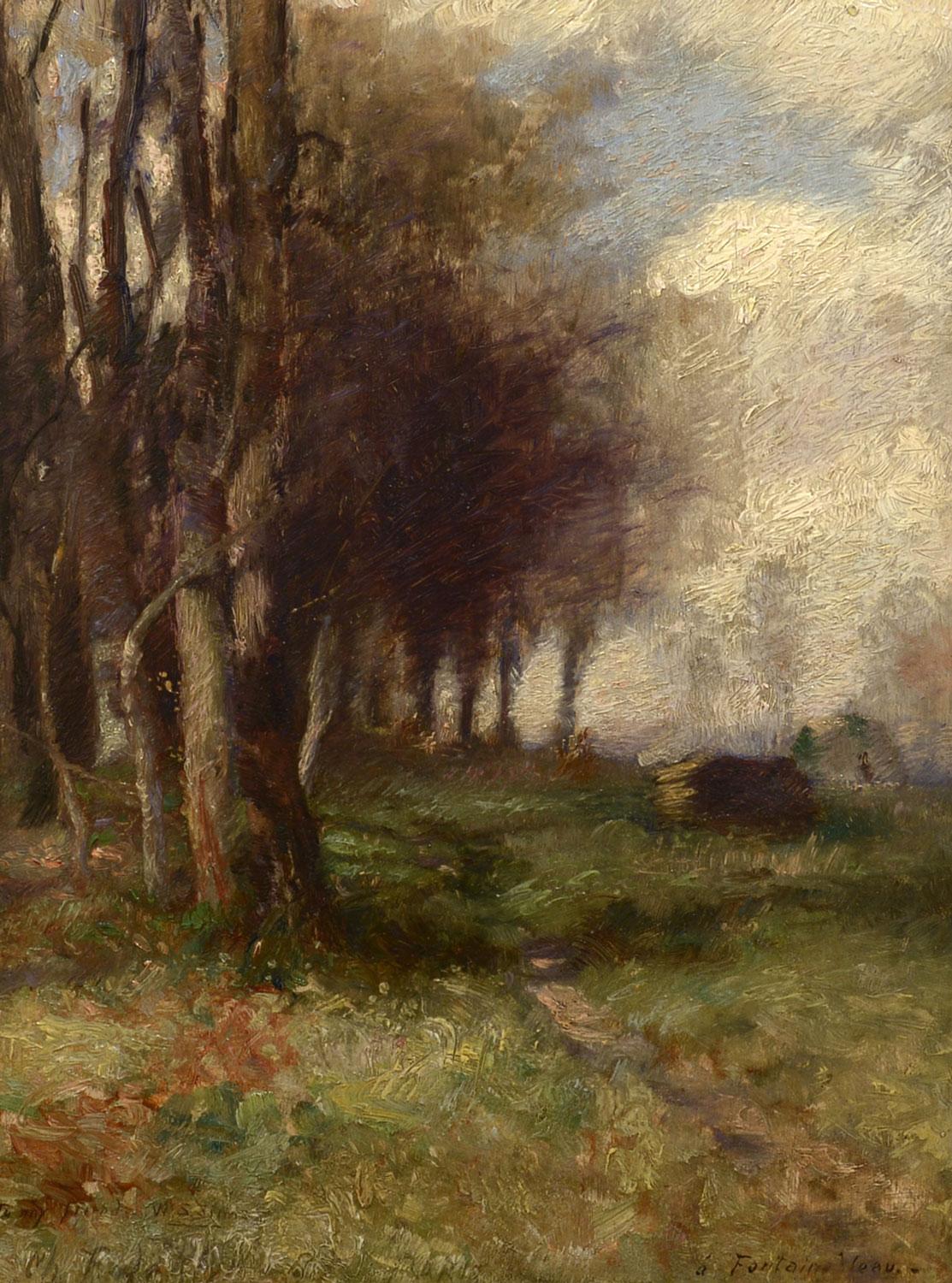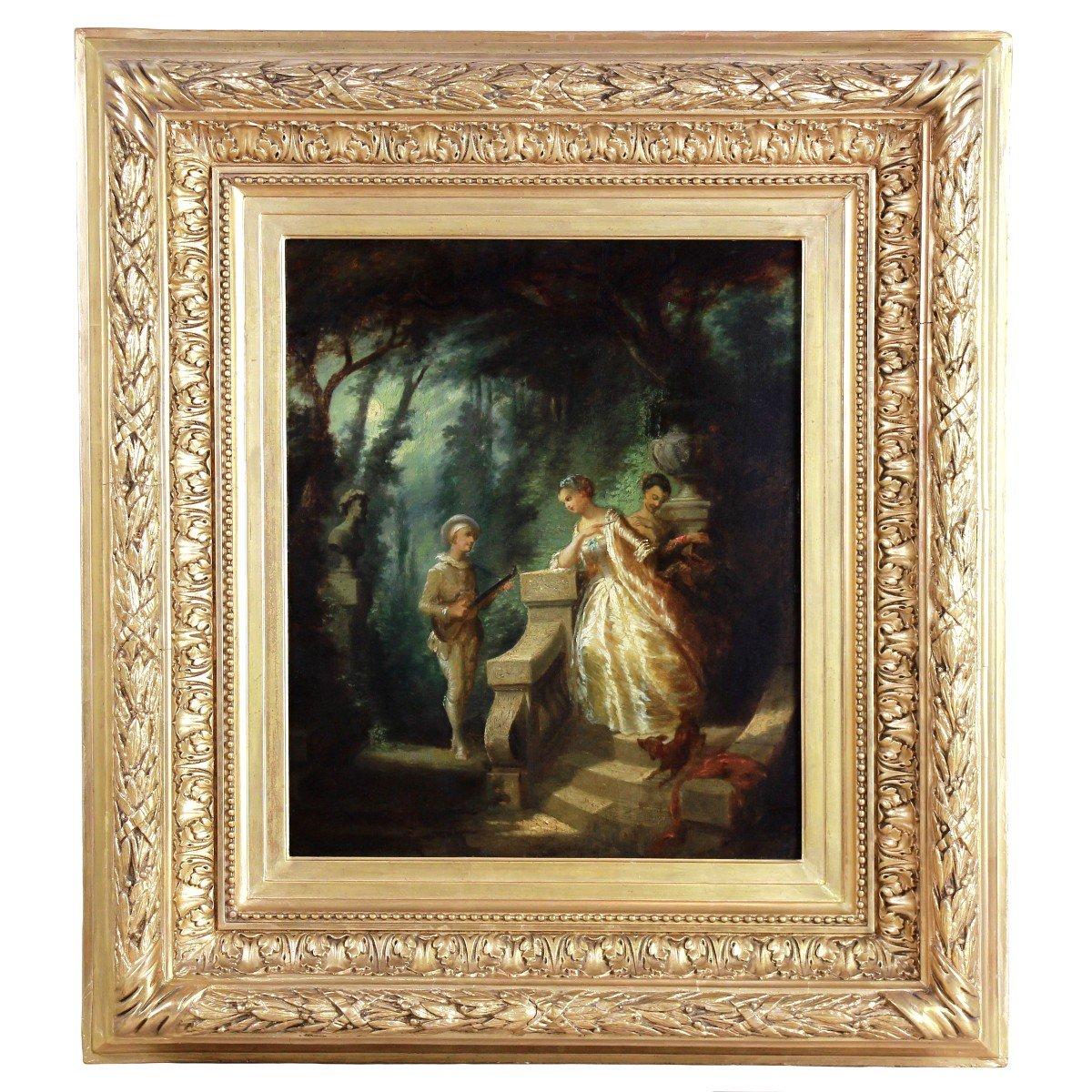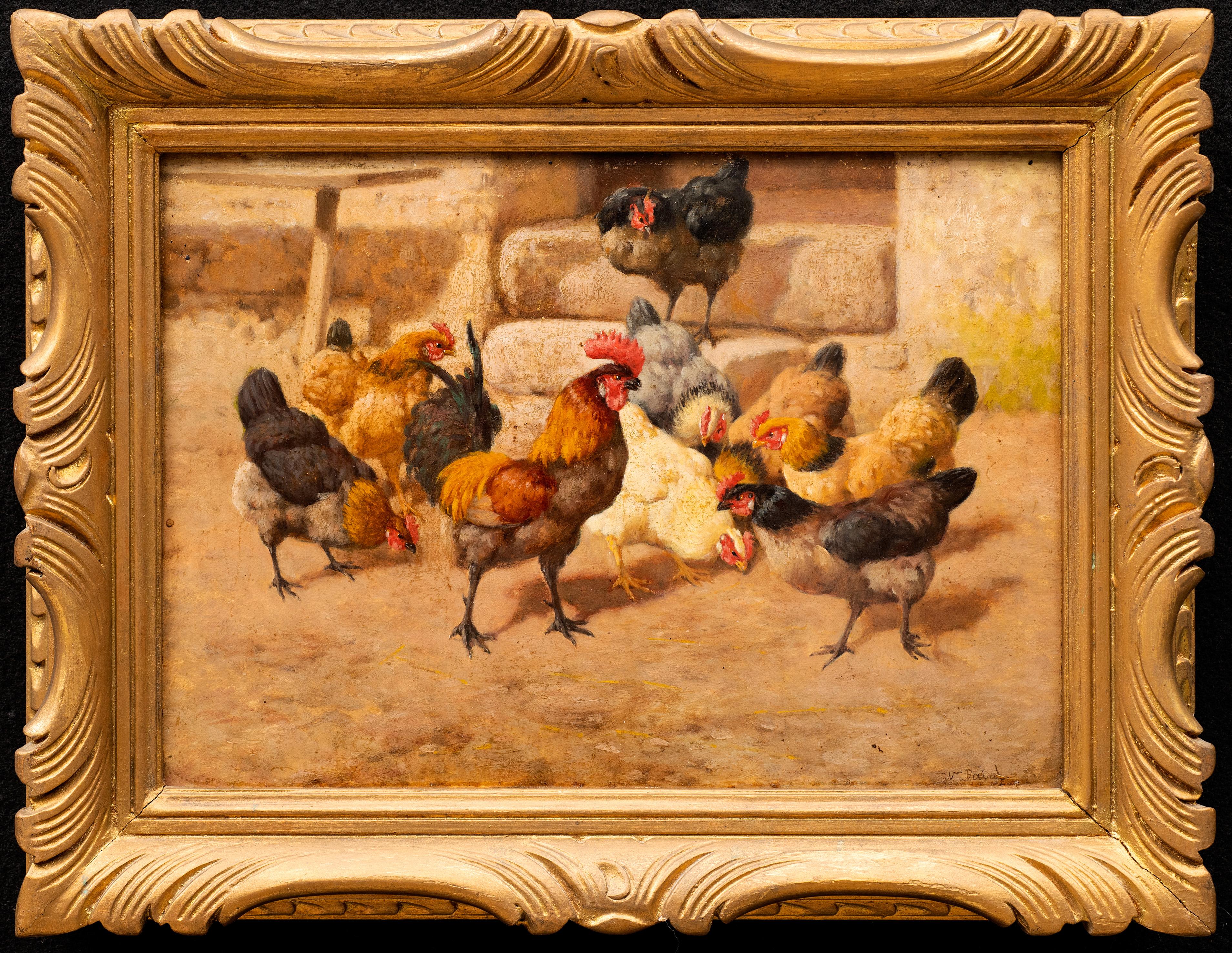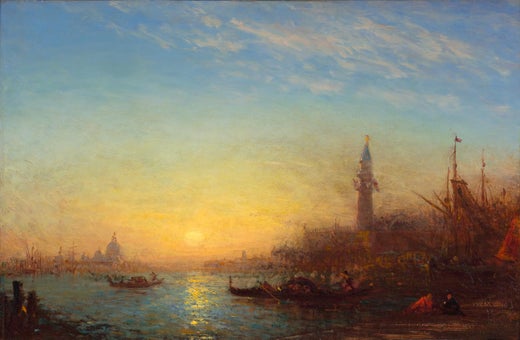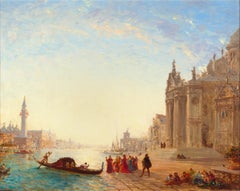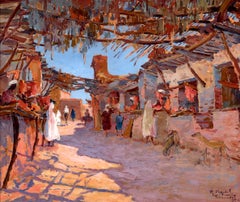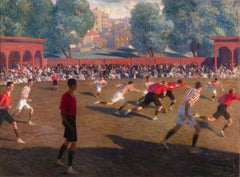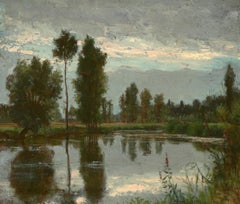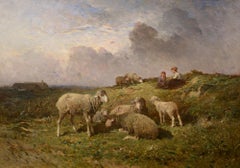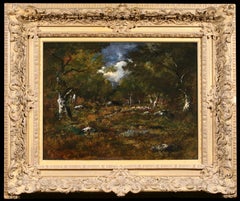Félix ZiemCoucher de soleil, quai des Esclavons by Félix Ziem19th Century
19th Century
About the Item
- Creator:Félix Ziem (1821 - 1911, French)
- Creation Year:19th Century
- Dimensions:Height: 34.5 in (87.63 cm)Width: 47 in (119.38 cm)Depth: 3 in (7.62 cm)
- Medium:
- Movement & Style:
- Period:
- Condition:
- Gallery Location:New Orleans, LA
- Reference Number:Seller: 32-04881stDibs: LU18615836792
Félix Ziem
Felix Ziem was born in Beaune, Burgundy in 1821. Originally Ziem planned to be an architect and studied at the National School of Architecture of Nancy in Dijon. For a while, he worked as an architect. In 1839, he moved to Marseilles, where he received some informal instruction in painting from Adolphe Monticelli (1824–86). Painting developed from a hobby into a career following a visit in 1841 to Italy, where he fell in love with the city of Venice, a place that would become the source for many of his works and to which he returned annually until 1892. Apart from Venetian scenes, he also painted many still lifes, portraits and landscapes from a variety of places: including Constantinople, Martigues, Cagnes-sur-Mer and his native Burgundy. Ziem's works were first exhibited in 1849 at the Salon in Paris and he remained a regular exhibitor there for many years. He also traveled extensively throughout Europe and in 1860, he moved to Montmartre, the artistic district of Paris. Financially successful, he was known to help young artists. In 1857, the French government recognized his contribution to the art world by making him a Chevalier of the Legion of Honor.
- ShippingRetrieving quote...Shipping from: New Orleans, LA
- Return Policy
More From This Seller
View AllLate 19th Century Barbizon School Landscape Paintings
Oil
Early 20th Century Impressionist Landscape Paintings
Panel, Oil
1910s Landscape Paintings
Oil, Panel, Cardboard
19th Century Impressionist Landscape Paintings
Oil, Panel
Late 19th Century Impressionist Figurative Paintings
Oil, Panel
20th Century Post-Impressionist Figurative Paintings
Canvas, Oil, Panel
You May Also Like
Late 19th Century Barbizon School Landscape Paintings
Oil, Wood Panel
19th Century Barbizon School Landscape Paintings
Oil, Wood Panel
1860s Barbizon School Landscape Paintings
Oil, Panel
Late 19th Century Barbizon School Landscape Paintings
Oil, Panel
1860s Barbizon School Figurative Paintings
Oil, Panel
1880s Barbizon School Animal Paintings
Oil, Wood Panel
Recently Viewed
View AllRead More
Paul Revere Crafted This Silver Coffee Pot 250 Years Ago
Perhaps best known as a Revolutionary War hero, Revere was also an accomplished silversmith, and this pot is now available on 1stDibs.
Degas Portrayed These Exuberant Ukrainian Dancers with ‘Orgies of Color’
Discovered in Parisian cabarets, the performers reenergized the artist’s practice.
